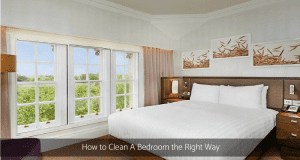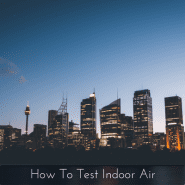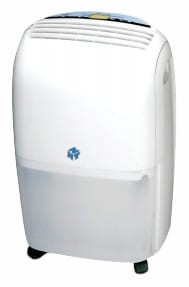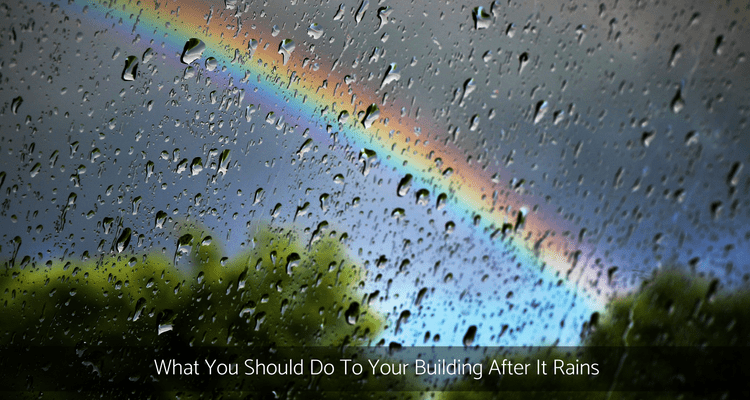Often people ask me, “is there anything I should do to my home after it rains?” It’s very common question, and there are few things you should check after a heavy rain.
Rain can sometimes affect your indoor air biology. Because rain water can bring dampness, it can affect your room’s temperature and humidity balance. After a heavy rain, you also have a lot of extra water in around the building that can affect the structure.
If you get some light showers, I wouldn’t worry too much about the indoor air quality. A light rain will have very little effect, if any, on your indoors. However, it wouldn’t hurt to do these checks anyway, if only for good measure.
After a heavy rain fall, the first thing you should do is dry the water and check the air circulation and biology with breath test and health test, especially the temperature, humidity and comfort levels.
1. Clean The Building
Sometimes rain comes with heavy winds, and winds can blow a lot of dust particles, leaves and other debris into your gutters and drains.
First, clear your gutters, then flush with water. You can use your hands or manually broom out debris. Once your gutters are cleaned, you can test the drainage flow by flushing water down with a hose.
HOW TO
How to clean a bedroom the right way
When’s the last time you cleaned your bedroom? We mean really cleaned it. Could it be that your room is in need of a good declutter, tidy and clean right now, and you’ve been putting it off because—let’s be honest—cleaning your bedroom isn’t nearly as fun as relaxing or sleeping in it?

2. Check for Holes or Splits in Exterior Surfaces
Heavy, polluted rain can cause building material damage. However, this is what roofs’ and gutters’ job is.
When rain hits these exterior surfaces, the materials will take the big hit. That means, your roof and gutters will deteriorate over time and might see a more drastic change in durability, which is a good thing — thank you, decomposition.
3. Check Drainage
You also want to check your drains as in down pipes and natural drainage away from the building. Rain water can often introduce a mind of its own, find its way to the lowest point, and your drainage system will start diverting away from the building – thank you, gravity.
That means, your drainage capacity might be less than adequate as well. So be sure to check these areas around and under the building.
HOW TO
How to test indoor air accurately
It’s important to learn how to test indoor air quality and do it at least once a week to make sure the air you breathe is pleasant, and to keep your health level in check.

4. Check Your Moisture Content
Of course, rain will add more moisture to your building interior than what’s needed. If you have an excess of moisture to your indoors, you can dry it a little by opening windows. Just let the air in the space dry until it’s back at the comfortable level.
You would need to be concerned about your corresponding damp areas on the ceilings and walls inside – these are greatly affected by potential mould over time.
Should I Put a Dehumidifier In?
Dehumidifying your building isn’t necessary, although, it’s not a bad idea either. If you get an extremely heavy rain fall, you could dehumidify the spaces for good measure. This will help fight off any moisture that the rain may have brought into your building.
Just make sure you dry water and dampness to a dry level within 48 hours, check your gutters, roof, drain pipes and drainage away from your building, then open all the windows after the rain has ended.
PRODUCT:
Hire a Dehumidifier
Round the clock protection when you need it most! Reduce mould, mildew, dampness, condensation, odours. Relieve hayfever, sinus headache, influenza, sneezing, itchy eyes, stuffy nose, coughing, allergic rhinitis, asthma symptoms any time of year!

Avoid!
Of course, you should avoid going outside during a thunderstorm because of lightning, and strong winds because of flying debris. You should probably just avoid being outside altogether during the rain for these reasons alone.
Run off from your neighbouring properties may also bring in some extra water. Again, make sure you follow this checklist after a heavy rainfall and your building won’t have any issues including, contaminated air or mould.
Towards healthier living, Carol Parr ♥
As Principal Consultant to Mitey Fresh since 1996, I have acquired knowledge of adverse health effects at the client’s properties and recommend effective strategies to reduce occupants’ exposure by eliminating and controlling as many sources of pollutants in order to create healthy indoor living environments that are as exposure-free and natural as practically possible.
Note from State Emergency Services NSW, during severe thunderstorms that people should:
* Move your car under cover or away from trees.
* Secure or put away loose items around your house, yard and balcony.
* Keep at least 8 metres away from fallen power lines or objects that may be energised, such as fences.
* Report fallen power lines to either Ausgrid on 131 388, or Endeavour Energy on 131 003 or Essential Energy on 132 080, as shown on your power bill.
* Keep clear of creeks and storm drains.
* Don’t walk, ride your bike or drive through flood water.
* If you are trapped by flash flooding, seek refuge in the highest available place and ring 000 if you need rescue.
* Unplug computers and appliances.
* Avoid using the phone during the storm.
* Stay indoors away from windows, and keep children and pets indoors as well.
* For emergency help in floods and storms, ring the SES (NSW and ACT) on 132 500.
Author
-
We’re glad you’re here. We’re Carol and Tony, founders of one of the longest running Healthy Home Blogs in the world, Mitey Fresh Australia. We’ve been on this journey for the last 25 years and are passionate about helping families sift through health hazards and triggers like allergens, mould, water damage, chemicals and EMFs, to get clarity about what’s toxic and what’s not so they can create a healthy and happy home for their family they love. Each month, people visit this blog seeking focus on the health and wellbeing of their loved ones, sustainable and effective practice tips and guides, to help create and manage healthier indoor spaces, improve the built environment that is pleasing to the senses and support healthy living and nature, every day. Starting this blog was to help change people’s lives, one family at a time, and we can’t wait to share how its allowed us to stand next to you and show you how interpreting these synergies between buildings and the environment they are built in will impact upon the health and well-being of those who occupy them. Find out more about Healthy Homes and what this blog can do for you!





